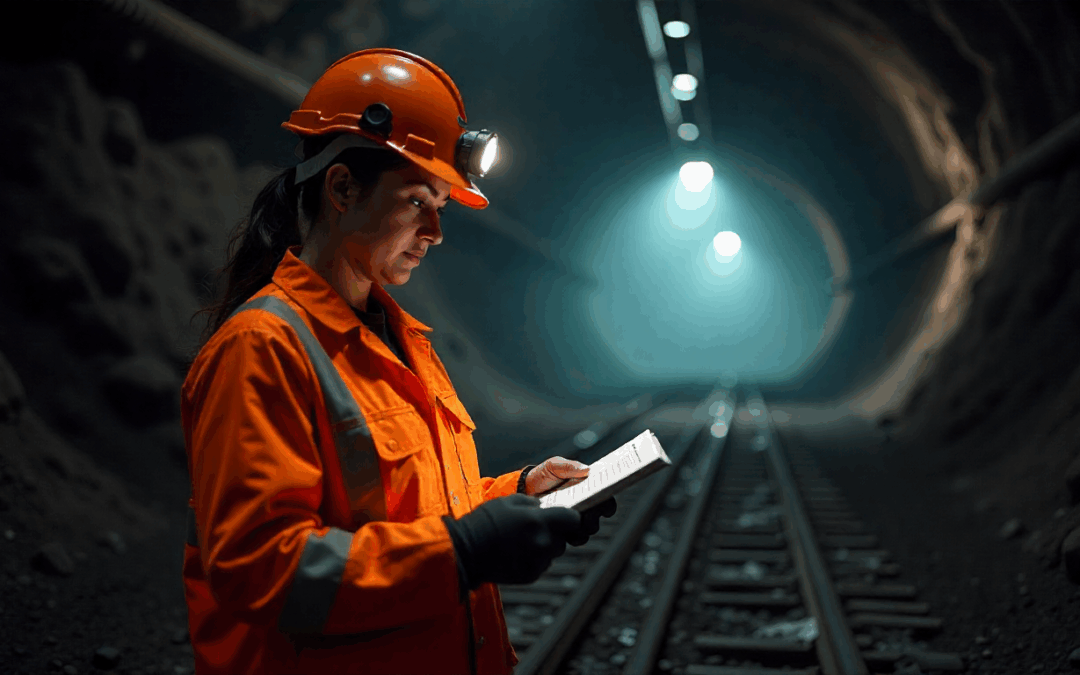Mining has never been a gentle business. Despite the strides we’ve made in safety protocols and technology, it’s often not the machines that fail—but the people. Inexperience and distraction remain two of the most dangerous variables underground. They’re harder to measure than equipment pressure or gas levels, but their impact can be just as explosive. Tackling these human factors isn’t about placing blame, though. It’s about understanding how easily they can sneak into the job and cause irreversible damage.
How Inexperience Contributes to Mining Accidents
When someone steps into a mine for the first time, they’re not just learning how to do a job; they’re learning how to stay alive. That learning curve is steep. Without enough exposure to real-world scenarios, new miners might not recognize when a sound is off or a smell signals danger. They might assume the wrong thing or hesitate when speed is critical. No checklist can replace the kind of instinct that comes from experience. And until that instinct is developed, the risk of something going wrong is far higher.
The Consequences of Long Shifts for Inexperienced Miners
Long shifts are a fact of life in mining. But what often gets overlooked is how those extended hours hit the greenhorns hardest. When you’re new, everything is unfamiliar and that burns through mental energy fast. Combine that with 12-hour days, and you’ve got workers who are running on fumes before they’ve fully grasped the safety rules. Exhaustion dulls decision-making, and even a small lapse can lead to a big mistake. Unfortunately, fatigue doesn’t wait for training to catch up.
When High-Risk Tasks Fall to Inexperienced Workers
It’s a bit ironic—and dangerous—that newer workers often get handed the grunt work that no one else wants. It might be hauling gear, running machines in tight spaces, or assisting with explosive materials. These tasks are risky by nature, and while they can be valuable learning experiences, throwing someone into the deep end without close oversight is asking for trouble. Sometimes the work is assigned with good intentions, but without the right support, it can put someone in a situation they’re just not ready to handle.
Types and Consequences of Common Mining Distractions
Distractions in mining aren’t just annoying—they’re dangerous. With the constant hum of equipment, flashing lights, and overlapping conversations on radios, the sensory load alone can be overwhelming. Add in personal stress, physical discomfort, or even just a moment of zoning out, and it’s easy to miss something important. Maybe it’s a hairline crack in the wall or a strange vibration underfoot—details that are easy to overlook when your brain is juggling too many things at once. And in mining, overlooking a detail is often where the real danger starts.
Cognitive Strain, Fatigue, and Mental Errors in Mine Safety
You can’t measure mental strain on a dashboard, but it’s there and it’s real. Mining demands constant awareness, and the weight of that can wear down even seasoned workers. For new hires, who are still trying to remember procedures and read the room at the same time, the cognitive load is enormous. Over time, that mental fatigue chips away at judgment and reaction time. What starts as simple confusion or hesitation can lead to missed steps, and missed steps in mining can mean serious injury or even worse.
Case Studies: When Inexperience Led to Fatal Mining Mistakes
Some of the most tragic mining accidents have come down to inexperience at the wrong moment. A first-year haul truck driver forgot to set the brakes, and the vehicle rolled. A new crew member in charge of explosives didn’t follow protocol exactly and triggered a premature blast. Another, tasked with electrical maintenance, skipped lockout procedures out of ignorance and never made it home. These aren’t just cautionary tales. They’re reminders that experience isn’t optional—it’s lifesaving.
The Cost of Unsafe Mining Practices
The cost of unsafe mining practices goes far beyond dollars and cents. The fallout from unsafe practices isn’t just a line item on a budget sheet; it’s reflected in lost lives, broken communities, stalled production, and long legal battles. Companies that fail to take inexperience and distraction seriously pay in more ways than one. There’s the immediate financial hit, yes, but also long-term damage to trust among workers, regulators, and the public. In the end, investing in safety isn’t just the smart choice, it’s the only sustainable path forward for growth and stability in the mining industry.
Beyond Training: The Role of Supervision and Mentorship for New Miners
Training is important, but it’s not a silver bullet. What really helps new miners stay safe is having someone looking out for them who’s been there and made the mistakes already. That’s where mentorship makes a difference. When new workers can lean on experienced teammates, they pick up more than just skills. They absorb the judgment and caution that only come from time on the job. And when supervisors are actively engaged, unsafe habits don’t have time to take root.
Reducing Distractions Through Safety Culture and Site Design
You can’t get rid of all distractions in a mine, but you can design the environment to minimize them. Clear signage, designated quiet zones, and smart layout choices go a long way. But site design is only half the battle. A strong safety culture—where people look out for each other and know when to speak up—can make a huge difference. It turns distraction from a personal problem into a shared responsibility, where the focus isn’t just on getting the job done, but getting it done safely.
Training Miners to Prevent Accidents
Training miners to prevent accidents isn’t just about memorizing rules—it’s about building instincts. The most effective programs combine classroom instruction with hands-on learning, realistic scenarios, and regular refreshers. Especially for new miners, practice is everything. It’s one thing to know the steps in theory; it’s another to react calmly in an actual emergency. Training miners to prevent accidents helps close that gap. And when training is treated as an ongoing process and not a one-time event, it builds a workforce that’s better equipped to handle whatever the mine throws at them.

Not sure what MSHA training you need? MSHA Safety Services makes it easy. Whether you’re new to mining or need a refresher, our expert team will guide you to the right course and help you stay compliant.
Regulatory Approaches to Address Inexperience and Inattention
Regulators aren’t blind to the role that inexperience and inattention play in mining accidents. That’s why many jurisdictions now require detailed onboarding, minimum hours of supervised work, and stricter penalties for companies that push new workers into high-risk roles too soon. These rules aren’t meant to slow down operations—they exist because history has shown what happens when corners are cut. The goal is simple: make sure no one ends up in a situation they’re not prepared to handle.
Combating Inexperience and Distraction in High-Risk Environments
At the end of the day, mining safety comes down to people. It’s about giving workers the tools, the training, and the support they need to make the right call when it matters most. Inexperience and distraction will always be part of the human equation, but that doesn’t mean they have to be fatal flaws. Through mentorship, smart design, and a strong safety-first mindset, the industry can keep pushing forward without leaving anyone behind.

